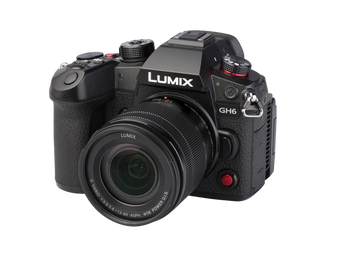- Exceptional image quality
- 8K video recording
- Fast and accurate autofocus
- Exceptional video quality
- High frame rate options
- Stabilized footage
- Durable construction
- Flexible touchscreen
- High price
- Large file sizes
- Heavier than competitors
- Micro Four Thirds sensor size
Canon EOS R5 vs Panasonic Lumix GH6
The world of photography has witnessed a significant shift towards mirrorless cameras, offering unparalleled flexibility, versatility, and image quality. Two prominent contenders in this realm are the Canon EOS R5 and the Panasonic Lumix GH6. Both cameras have garnered attention for their exceptional features, but they cater to different needs and preferences. In this comparison, we'll delve into the details of each camera, highlighting their strengths, weaknesses, and ideal uses.
Sensor and Image Quality
The Canon EOS R5 boasts a full-frame 45-megapixel CMOS sensor, capable of capturing stunning images with exceptional detail and dynamic range. The EOS R5's sensor is particularly well-suited for portrait, landscape, and studio photography, where high resolution and low noise are essential.
In contrast, the Panasonic Lumix GH6 features a Micro Four Thirds 25-megapixel Live MOS sensor. Although it may seem like a disadvantage in terms of megapixels, the GH6's sensor is optimized for video recording and fast autofocus, making it an excellent choice for videographers and content creators. The Micro Four Thirds system also offers a wider range of lenses with a shorter flange distance, allowing for more compact and lightweight designs.
Autofocus and Speed
The Canon EOS R5 features a advanced Dual Pixel CMOS AF II system, offering 6,072 selectable autofocus points and impressive subject tracking capabilities. This makes it an excellent choice for sports, wildlife, and action photography, where fast and accurate autofocus is crucial.
The Panasonic Lumix GH6, on the other hand, employs a contrast-detection autofocus system with 315 selectable points. While it may not match the EOS R5's autofocus speed and accuracy, the GH6's system is still highly capable and suitable for most video and photography applications.
Video Capabilities
The Panasonic Lumix GH6 is specifically designed with videographers in mind, offering a range of features that make it an attractive option for content creators. It can record 10-bit 4K video at up to 120fps, with a maximum bitrate of 400Mbps. The GH6 also features a vari-angle touchscreen LCD, making it easy to monitor and adjust settings on the fly.
The Canon EOS R5 is no slouch when it comes to video, either. It can record 10-bit 4K video at up to 120fps, with a maximum bitrate of 480Mbps. However, the EOS R5's video capabilities are more geared towards stills photographers who also want to shoot high-quality video, rather than dedicated videographers.
Ergonomics and Build Quality
Both cameras feature durable and weather-sealed bodies, with the Canon EOS R5 weighing in at approximately 738g and the Panasonic Lumix GH6 at around 727g. The EOS R5 has a more substantial grip and a larger EVF, making it more comfortable to hold and use for extended periods.
The GH6, on the other hand, has a more compact design and a vari-angle LCD, which can be beneficial for vloggers and content creators who need to monitor their footage from various angles.
Conclusion
In conclusion, the Canon EOS R5 and Panasonic Lumix GH6 are both exceptional mirrorless cameras that cater to different needs and preferences. The EOS R5 is ideal for stills photographers who require high resolution, excellent autofocus, and robust build quality. The GH6, on the other hand, is perfect for videographers and content creators who need a camera with advanced video features, fast autofocus, and a compact design.
Ultimately, the choice between these two cameras depends on your specific needs and priorities. If you're a stills photographer looking for a high-resolution camera with excellent autofocus, the Canon EOS R5 may be the better choice. However, if you're a videographer or content creator who requires a camera with advanced video features and a compact design, the Panasonic Lumix GH6 is an excellent option.
As mirrorless cameras continue to evolve and improve, it's exciting to think about the possibilities they offer for photographers and videographers alike. Whether you choose the Canon EOS R5 or the Panasonic Lumix GH6, you can be confident that you're investing in a high-quality camera that will help you capture stunning images and videos for years to come.

































